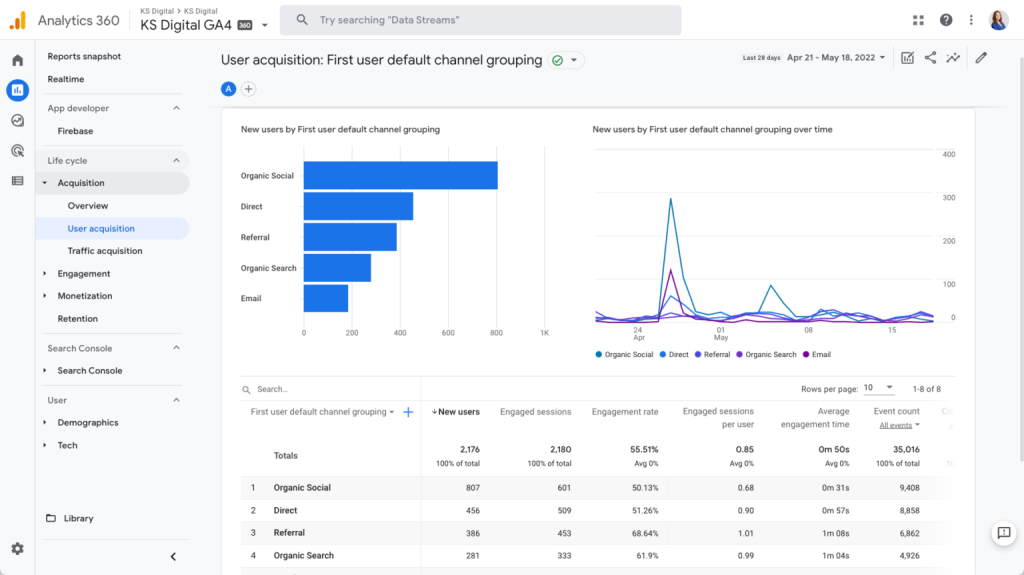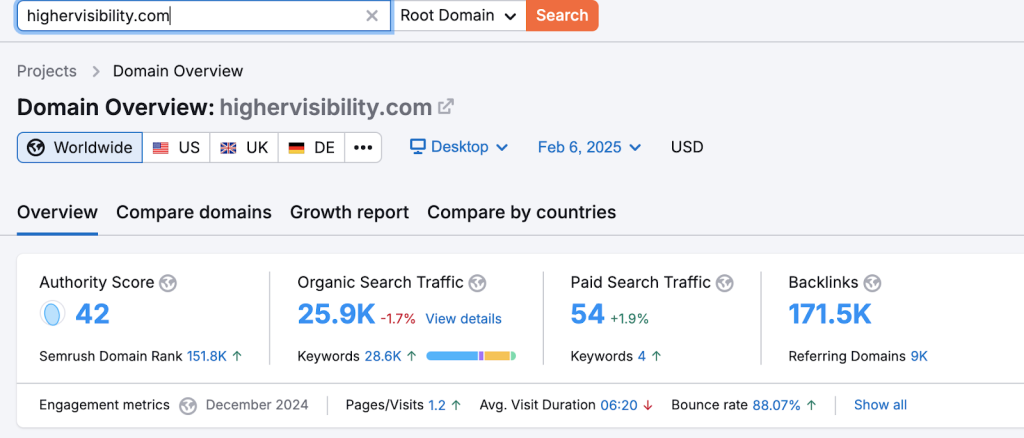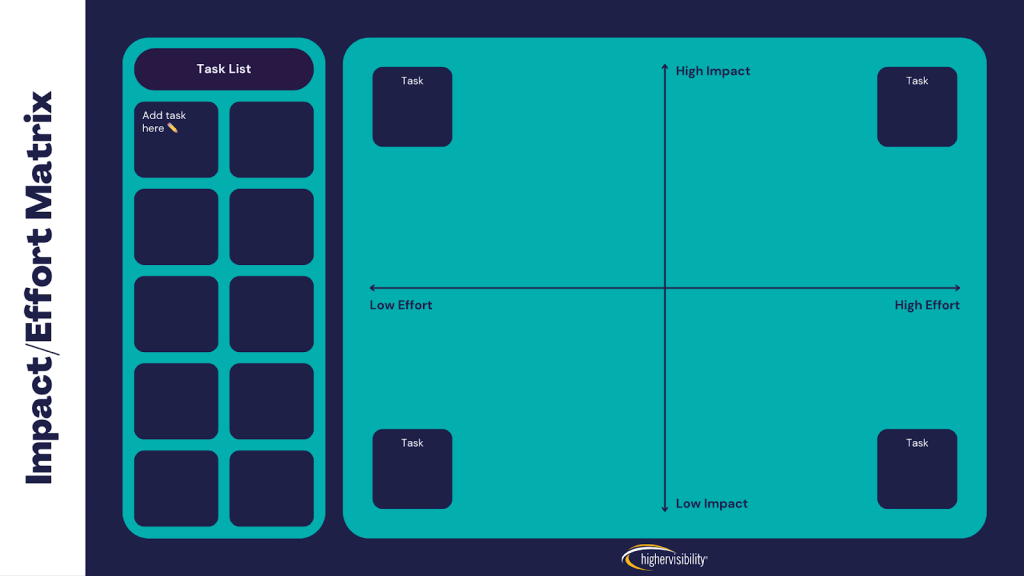How to Plan an Effective Marketing Budget in 2025
Editor’s Note: This post was originally published in August of 2024 and was updated for accuracy and comprehensiveness.
A marketing budget helps you dedicate a specific amount to your marketing activities for a particular time — say, a month, quarter, or six months. This budget is the amount you want to spend on SEO, social media marketing, PPC, or any other marketing channel to achieve a specific goal.
Goals can be increased in traffic, brand expansion, or actual revenue.
While your marketing budget relies solely on the marketing strategy for that period, you still need to be as feasible as possible.
But without a clear plan, you risk overspending in the wrong channels, targeting the wrong audience, or missing opportunities to grow your business.
In this article, I’ll share seven (7) key strategies to create an effective marketing budget from scratch.
Why Should You Plan a Marketing Budget?
Here are some of the main reasons why planning your marketing expenditures is a good idea:
1. Strategic Focus
Your marketing budget must consider the best channels to focus on to achieve your goals. This is because you’ll need to evaluate various channels (and tactics to get the best in each) to determine the channel with the best return on your investment.
Let me explain.
Instead of spending your limited budget on PPC or email marketing activities, a predefined budget helps you decide whether to focus on a specific channel (e.g., SEO or social media marketing). This allows you to save money without compromising the results you want for your business.
For instance, if you want to generate leads, you can study the channels that usually bring in more customers. Look for performance metrics on these channels (conversion rates, click-through rates, etc.) to know which one funnels the highest-quality leads for your business.
That channel is where you should focus on.
2. Financial Control
A marketing budget helps you set clear spending limits for your team. The goal is to ensure that marketing activities remain cost-effective and within the business’s economic constraints.
Technically, a detailed marketing budget outlines where (and how) funds will be spent. This makes tracking expenses easier and holds team members accountable for their budget allotments.
3. Contingency Planning
Budgeting allows you to set aside contingency funds for unexpected marketing opportunities or challenges.
This financial buffer ensures that your pre-planned marketing initiatives can continue running even if unforeseen expenses arise or you need to capitalize on a new market opportunity.
How Much Should You Budget for Marketing?
According to a 2024 Gartner survey, companies spend around 7.7% of revenue on marketing. However, this isn’t a hard-fast rule. Your marketing budget can vary depending on multiple factors:
1. Business Size:
As you’d expect, more established brands can get away with allocating a smaller portion of their revenue to marketing compared with small to medium-sized businesses.
According to the 2024 CMO Survey, businesses making over <10B in revenue allocate 7.8% of their revenue of marketing while those below the $10M mark budget up to 19.6%:

2. Business Model:
Marketing spending also differs between B2B and B2C businesses. According to the same survey, B2B companies spend 6% to 10% of their revenue on marketing, while B2C companies spend 12% to 15%.
3. Business Industry:
There are also significant variations between industries. For example, businesses in the consumer packaged goods industry spend 18.5% of their revenue on marketing compared to 1% for the mining and construction sector.
Ultimately, your marketing budget depends on your business goals, competitive landscape, and market dynamics. You can adjust the percentage as you see fit.
How to Plan a Marketing Budget in 7 Steps
Now, let’s walk through the steps of creating your marketing budget.
1. Establish Your Business Goals to Set
The first step is to set clear expectations (in terms of traffic, revenue, or visibility) so that you can focus on what you need to achieve them.
A good, easy start is to follow the SMART goal template:
- S – Specific
- M – Measurable
- A – Attainable
- R – Relevant
- T – Time-bound
For example, one of your SMART goals can be to increase website traffic by 25% within a year or generate 1,000 leads per month within six months.
This approach helps you set clear priorities, allocate resources to the right activities, and track progress accordingly.
Your business goals also dictate which channels and strategies you should pursue. For instance, if your goal is to increase brand awareness, you can focus on improving your organic search footprint through SEO and social media engagement.
2. Look At Past Performance to Find Where You Can Improve:
Reviewing which marketing efforts worked well in the past (and which didn’t) can help you make more informed decisions about where to allocate your marketing dollars.
First, check your key performance metrics: conversion rates, customer acquisition costs, user engagement, etc. for each channel. If a particular channel has consistently delivered a high ROI over time, allocate a significant portion of your budget to that area. Otherwise, divert the budget to more effective strategies.
For example, if SEO is your primary lead acquisition channel, check Google Analytics to know where the majority of your search traffic comes from:

Or, if you focus on lead generation, you’ll also see what channels are driving the most leads:

From this image above, it’s clear that affiliate and email marketing are the primary lead generation channels. Thus, you can allocate more of your budget to these channels to increase your conversion rate.
Each customer’s average lifetime value (LTV) per channel must be calculated. A channel might generate fewer leads but attract high-value customers with a high retention rate. In this case, you want to increase your investment in these channels to create long-term ROI.
Note: Read more on how to calculate CAC and LTV.
Also, examine your existing marketing and sales funnels to identify any stages where customers drop off. By pinpointing the “leakiest” stages of the buyer’s journey, you can determine where additional investment might improve conversion rates and overall funnel efficiency.
For example, if your conversion rates are high but your traffic levels are low, invest more in top-of-the-funnel content to attract a broader audience.
On the other hand, if your website visitors abandon their carts or do not complete purchases, you’ll need to allocate funds to improve your website’s usability, especially toward the checkout page.
3. Study the Market to Know Which Channels are Already Performing Well:
Competitor analysis is another effective strategy to make informed decisions on your budget allocation. It helps you build a simple picture of:
- Their priority channels,
- The strategies that increase engagement and conversions,
- The gaps in their strategy that you can capitalize on.
Use SEO tools like SEMRush or Ahrefs to see how they prioritize search (either organic or paid), keyword focus, and landing pages. For example, analyzing our website on SEMRush, you can see that a majority of our traffic comes from organic search:

Our top keywords are branded and service-focused:
In your case, you can check your competitors’ top-performing pages to learn the keywords they’re ranking for, content format (and style), and gaps to improve. Then, target similar keywords with better content.
Also, review your competitors’ social media profiles to understand which platforms they use most, the content their audience loves the most, and the level of engagement they receive.
The goal isn’t to mirror their strategy but to find opportunities to capitalize on for your future marketing efforts.
Alternatively, if the market seems saturated with competitors focusing on PPC advertising, you’ll find more success by investing in underutilized channels like influencer marketing or social media marketing.
4. Prioritize High-ROI Activities to Maximize Your Marketing Budget
Once you understand which channels have worked well in the past, streamline your budget into high-value activities that bring the most ROI for your business.
For example, if your performance analytics showed that email marketing drives the most results, improve your email lists and create personalized campaigns for higher ROI.
A good way to do this is to create an impact-effort matrix like this:

The matrix is segmented into four major quadrants:
- High Impact, Low Effort (Low-hanging Fruits): These activities generate the most results with minimal resources. The email marketing example I cited earlier falls into this bracket.
- High Impact, High Efforts (significant projects): These activities are equally profitable but require more time, budget, and effort. For example, launching new collection pages and optimizing them for higher rankings.
- Low Impact, Low Effort: These activities are easy to do but don’t contribute much to your bottom line. They’re often “nice to have” but shouldn’t be on your priority list.
- Low Impact, High Effort: Avoid these activities, as they consume a portion of your budget but yield little to no results. For you, depending on your business, this may be YouTube marketing or creating an e-commerce app.
5. Determine Your Outsourcing Needs
Next, you’ll need to assess which aspects of your marketing plan can be handled internally and which may require external expertise.
For example, you may have an in-house team that excels at creating content and managing social media but lacks the specialized skills needed for SEO or PPC management.
When it comes to outsourcing marketing activities, you have three main options:
Freelancers
These independent professionals offer specialized skills on a project-by-project or hourly basis. They are flexible and cost-effective options for smaller, short projects.
You can hire them for specialized tasks such as web development, graphic design, or content writing.
Pros:
- You only pay for the work done.
- Save more on overhead and workforce costs.
- They are flexible and let you scale up or down based on your needs.
Cons:
- Freelancers may have multiple clients, impacting their availability and work quality.
- Consistency in quality and brand messaging can also be challenging when working with numerous freelancers.
Generalist Agencies
These agencies provide different types of marketing services under one roof.
They offer comprehensive service packages, including developing a content strategy, content creation, SEO, PPC, and social media management.
Pros:
- Their integrated approach often leads to better alignment between channels.
- They help save costs on talent acquisition.
- They save the effort of managing multiple agencies simultaneously.
Cons:
- They’re more expensive than freelancers and may require a monthly retainer fee.
- While they offer a broad range of services, they may not have specialized knowledge in some areas, which will affect your outputs and results.
Specialist Agencies
Specialist agencies focus on specific marketing areas, such as PPC or social media. They have experience and expertise in this niche, so they can deliver more targeted and effective results for their clients.
Pros
- Their specialized knowledge means faster results and better work quality.
- The main benefit of working with specialist agencies is their focus, which often translates into higher quality work and faster results. They are ideal for businesses that need a team with the expertise, experience, and focus on one area.
Cons:
- They can be expensive because of their specialized abilities.
- Since they only focus on one aspect of your marketing strategy, you may need to work with multiple agencies to cover all your marketing needs.
6. Allocate a Portion of Your Budget to New, Effective Channels
Now that you have identified your priority channels, it’s time to allocate your marketing budget accordingly. While assigning a larger portion to channels that promise the best ROI is logical, it is also worth setting aside a portion of your budget to experiment with new channels.
Testing new strategies plants the seeds for future opportunities and provides a backup source of traffic and revenue should your primary channels underperform.
7. Set Aside a Contingency Fund to Cover Unexpected Expenses
Finally, build redundancy into your marketing budget.
A financial buffer ensures your marketing plans can continue uninterrupted, even when unforeseen expenses arise, or new opportunities present themselves.
For example, if a campaign underperforms, a contingency fund of 5% to 10% of your marketing budget can help you pivot quickly and try a different approach without straining your company’s finances or other marketing initiatives.
Mistakes to Avoid When Planning a Marketing Budget
Now that you know the fundamentals of creating a marketing budget, here are a few mistakes to avoid during planning.
- Underestimating the Cost of Marketing Activities
Underestimating the costs associated with various marketing activities can lead to budget shortfalls. Be realistic about the expenses involved in executing your marketing strategies. Consider all potential costs, including tools, software, personnel, and advertising fees.
- Spreading Your Budget Too Thin
Investing in too many channels at once can dilute your efforts and reduce the effectiveness of your campaigns. To maximize ROI, focus on the most promising channels and strategies.
By focusing your budget on fewer high-impact areas, you have a better chance of creating successful campaigns.
- Failing to Measure ROI
Without measuring the ROI of your marketing efforts, you cannot determine what is and isn’t working. Regularly assess campaign performance and adjust your budget accordingly.
Use analytics tools like Google Analytics, SEMRush, or Search Console and set clear KPIs to track your progress and spot areas for improvement.
- Overlooking Existing Customers
Exclusively focusing on acquiring new customers can be a costly mistake. After all, it costs more to acquire new customers than to retain the ones you already have.
However, allocate part of your budget to customer retention strategies, such as loyalty programs and personalized marketing.
- Using the Same Budget As Before
Using the same marketing budget year after year without considering changes in your business, market conditions, and consumer preferences can limit your growth. Adjust your budget annually based on a thorough analysis of past performance, current goals, and market trends.
Final Thoughts
Having a carefully planned marketing budget is essential to driving business growth.
Without it, your marketing efforts can become disorganized and inefficient. You may also end up missing opportunities or spending on channels that don’t contribute to bottom line revenue. Now, it’s time to implement the tips outlined above to ensure your marketing efforts are well-funded and capable of delivering impactful results. If you need further help, learn about our SEO services and call us or send an email for any inquiry.the tips outlined above to ensure your marketing efforts are well-funded, aligned with your business objectives, and capable of delivering impactful results.
